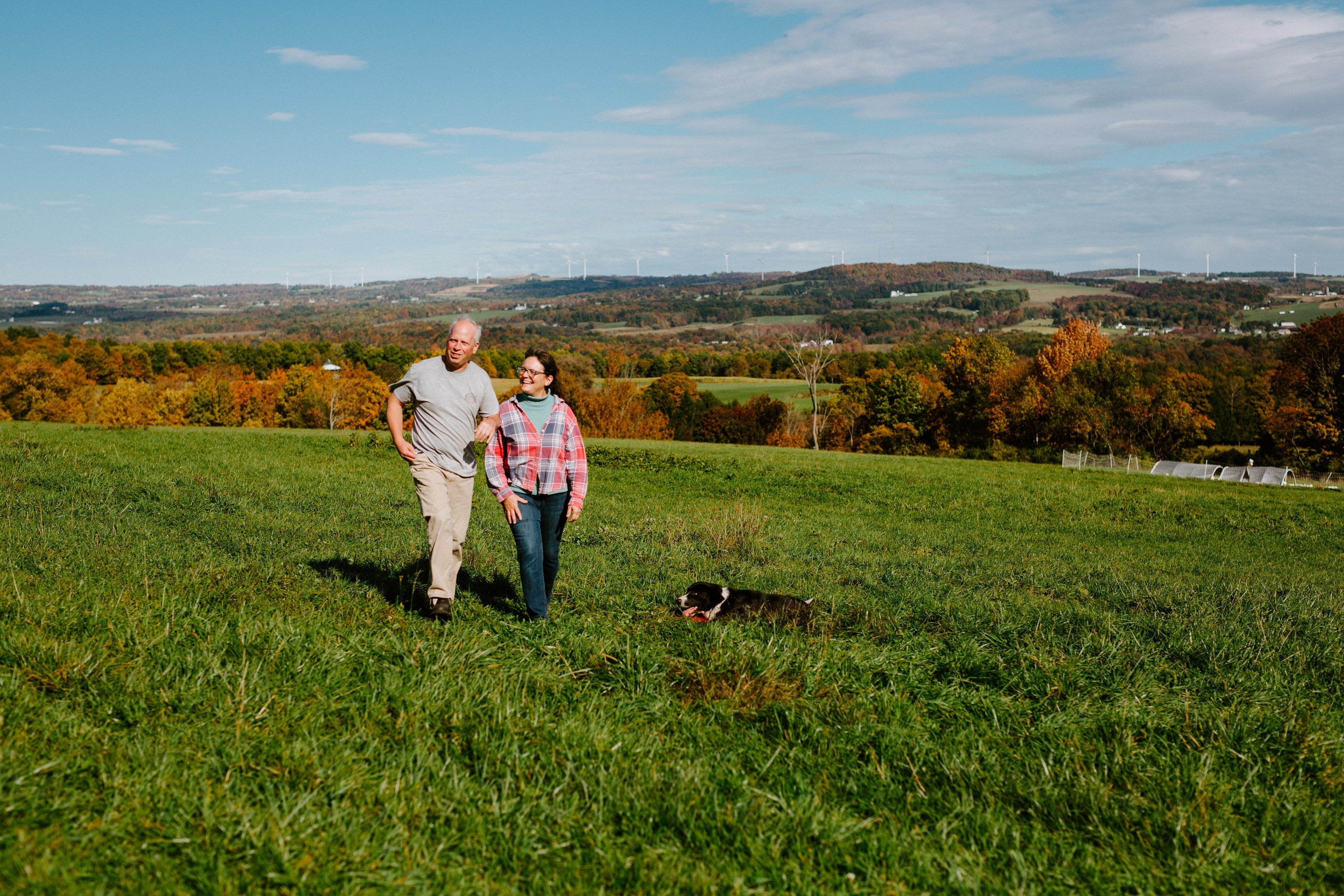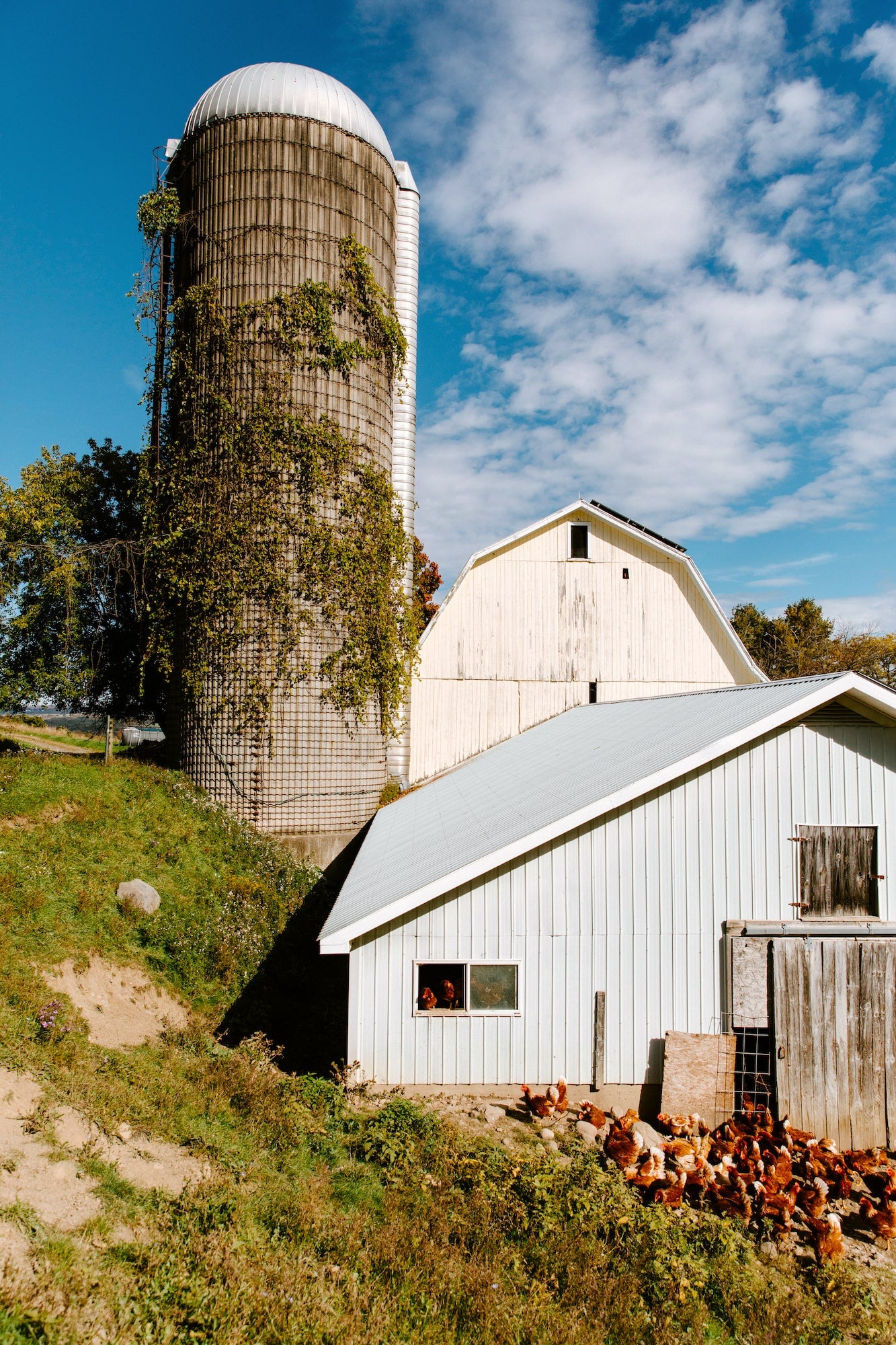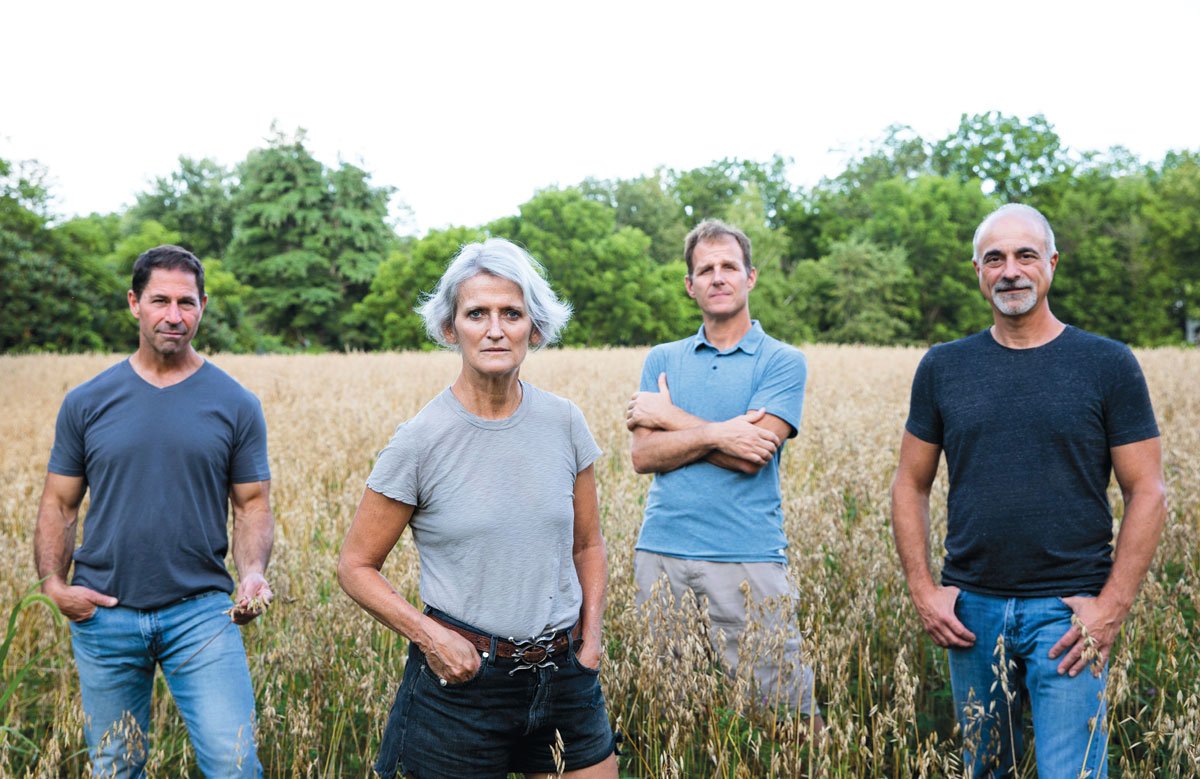Crème de la Crème
In conversation with Peter and Suzie Jones
Suzie and Peter Jones didn’t set out to become cheesemakers. In 2004, the couple moved their family to Upstate New York and began raising goats for meat. Though they were able to sell some of it, customers kept insisting that they’d rather have goat cheese instead. “So we took the hints and started making cheese,” Suzie remembers. “Then, we realized how hard it was to raise the animals, make the milk, and make the cheese, so we started buying milk from our neighbors.”
Twenty years later, Jones Family Farm is locally renowned for its goat’s and cow’s milk cheeses like chèvre, feta, mozzarella, and its signature New York crème cheese. The only reason Suzie and Peter aren’t better known outside the Mohawk Valley is they’ve dedicated their careers to feeding their community. “When we moved here, we started looking at where we could sell our product and everyone was like, ‘You need to go to New York City.’ I was like, ‘People here eat, too,’” Suzie says.
Luckily for us, Jones Family Farm has recently expanded its reach beyond an hour-drive radius from their Herkimer property. Manhattanites can now find Suzie and Peter’s crème cheese, a farmhouse-style, spreadable cheese made from fresh, whole milk, at Mast Market. Here, the duo shares more of their origin story, as well as the details behind their cheesemaking process.

Mast Journal: Community is clearly very important to Jones Family Farm. How did you develop this close relationship with your neighbors?
Suzie Jones: There are just so many obstacles to starting out on a farm and when we first got here, all of our surrounding neighbors just pitched in and helped us at every turn. It was phenomenal, really. I know not everybody has the perfect experience, but I would say our experience was fantastic.
When we had the opportunity to buy milk from them, we made sure that they got paid a fair price. That's a really big part of our story. We love our neighbors and we want them to remain our neighbors. But it is so hard to make a living as a dairy farmer. They don't have any control over the price that they get. So we made it goal number one to make sure that we pay our neighbors a fair and good price for their milk so they can continue to be our neighbors.
MJ: That’s incredible.
SJ: More importantly, we don't have to milk anymore. Let's be real.
MJ: That’s a major perk! But you still raise your own animals?
SJ: We do. We actually have a sizable herd of both goats and sheep that we continue to sell for meat. It's hard to know how many we have on any given day, just because animals are being born constantly, but we have around 200 goats and sheep.
MJ: Got it! What types of cheese do you make?
SJ: Our flagship product is the crème cheese that Mast is getting. We do a classic chèvre. We do feta. We do a little Belper Knolle-type cheese. It's a hard cow's milk cheese encrusted in peppercorns and aged until you can grate it or shave it over pastas and salads and stuff.
MJ: That sounds delicious.
SJ: It’s yummy.
MJ: Do you make other products besides cheese?
SJ: We are a fully diversified farm, so besides the goats and the sheep that we raise for meat, we raise chickens in the summer for meat. And we have a 5A slaughterhouse on site to process those. We have layers for eggs, as well.
Peter Jones: Every summer, Suzie and I butcher about 3,000 birds.
MJ: Wow. And you make frozen desserts, too?
SJ: We make gelato, as well. I'll make it from cow's milk, goat's milk, and then I'll even do a non-dairy with coconut milk.
MJ: Where can people find all these products?
SJ: We're pretty hyperlocal. Our origin story is all about being present here in the Mohawk Valley, which is halfway in between Syracuse and Albany. If we can feed our community, that feeds me. We have this need to add to the value of our community and support our neighbors. We drew a circle around our farm with a radius of about an hour drive and this is where we concentrated. But now, we are starting to reach out a bit more. We found distributors that help us because it is just the two of us.
PJ: The logistics are really hard.

MJ: Totally. And if you’ve been able to sell closeby, then why go far?
PJ: Right. We’ve been lucky.
SJ: We’ve been extraordinarily lucky.
MJ: Can you tell us more about the process of making the crème cheese?
PJ: It's very old school. I’m a self-taught cheesemaker. I did what anybody else would do. I bought a book and started playing in the kitchen. That's why we make very simple things. They’re easy to make. At this point, we're only making 50-gallon batches, so very tiny, little batches. I get my milk at night and I'll pasteurize it. Then we set it overnight. It will add the cultures and the rennet. It'll sit for about 12 to 14 hours, depending on the time of year. I’ll come in the next morning and drain the curd. The curd separates from the whey—thank you Miss Muffet—and again, depending on the time of year, it drains anywhere from 24 to 36 hours. Then we just plop it into a mixing bowl and add a little salt. If we're doing the vegetable or other flavors, then we'll flavor it. Otherwise it's pretty unadulterated.
SJ: It is really very different from the bricks of cream cheese that you would normally see in the grocery store. Those are made in a day. They've got their components, they pasteurize them, they make the cheese, and they put it in a centrifuge, which saves that draining time. But what's really nice about our longer draining time is that during that day and a half, flavor is being created. So our crème cheese tastes like cheese.
PJ: And there's a certain seasonality to it. I was totally blown away when I found out that the larger plants standardize their milk. When the milk comes in, they make sure it's always 3.2 percent butter fat or something like that. So they're taking milk components, skim milk and butter fat, and then mixing that all back together. That brick of cream cheese is the same every single time, but ours is a little different as the seasons change.
In the winter, my yields are way up. I'm making a lot more and I think it tastes a little heavier and I don't know that it's quite as tangy. But summertime, my yields go way down. The cows are outside whooping it up in the pasture instead of making the milk that I need. So the flavor changes a little. It’s a little more buttery in the summer than it is in the winter.
MJ: That’s so interesting! And what flavors of crème cheese do you offer?
SJ: We have three flavors besides the original plain. We have a green onion and leek, which is good and oniony. We have a vegetable medley. And the last one is Hungarian pepper. It’s smoky, garlicky, and a little spicy.
MJ: Do you grow the vegetables yourselves? Or get them from a farmer partner nearby?
SJ: We've had to partner with folks because cheese is so tricky. It's a lot easier to use a freeze-dried product. So we work with a producer that does freeze-dried vegetables, which have a longer shelf life. The garlic and red onion are fresh. Where we can use fresh and it doesn’t affect shelf life, we a hundred percent do it.
PJ: Fresh vegetables have so much water in them and then that water releases and you end up with a pool of water on the top of the cheese. And you have to make some concessions to food safety, too. More often than not, E. coli comes out of fresh vegetables.

More from The Journal

On the surface, the three men behind River Valley Community Grains are millers, but the business that Lenny Bussanich, Mike Hozer, and Larry Mahmarian have built is about much more than making flou...
Read more